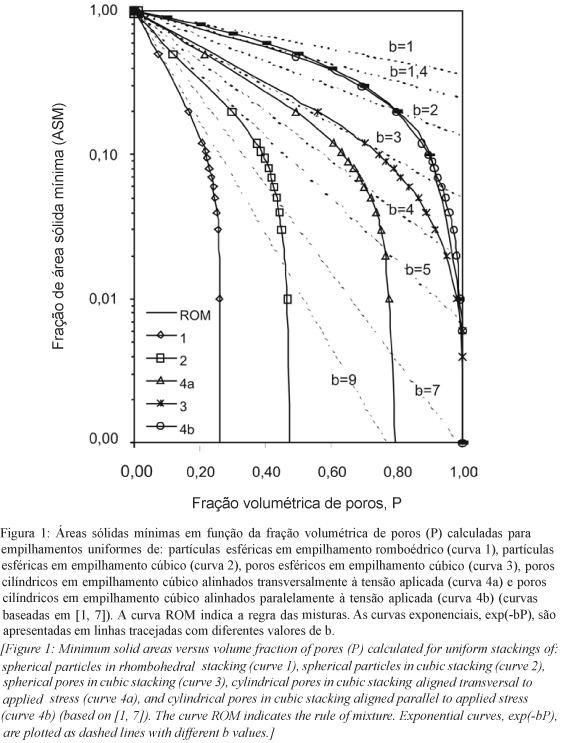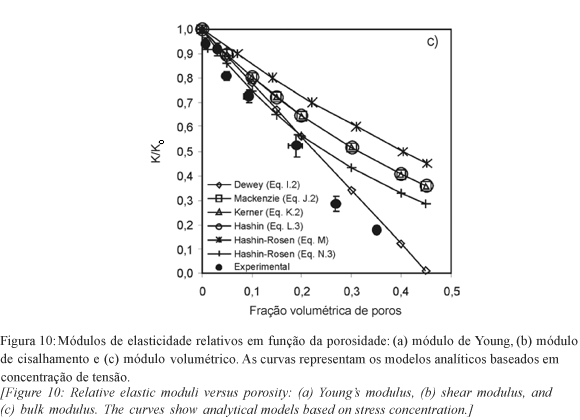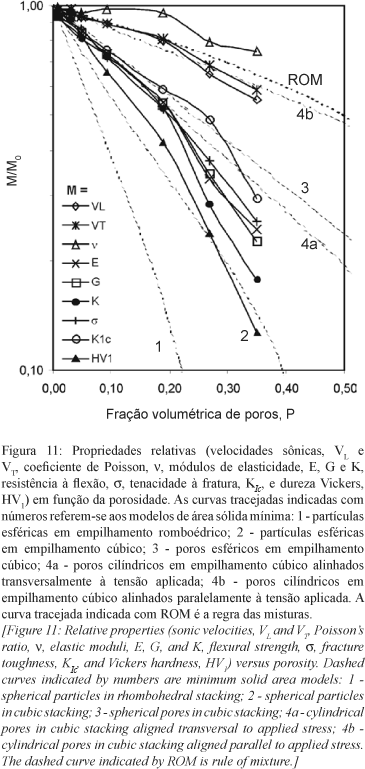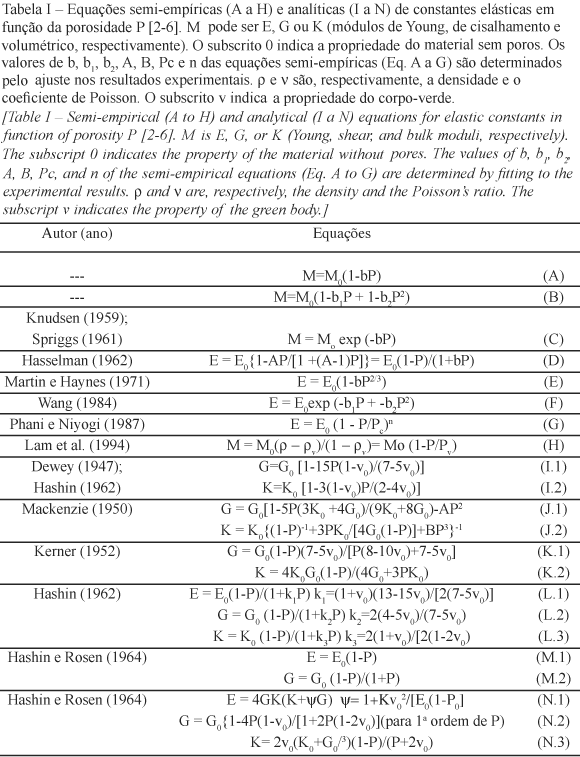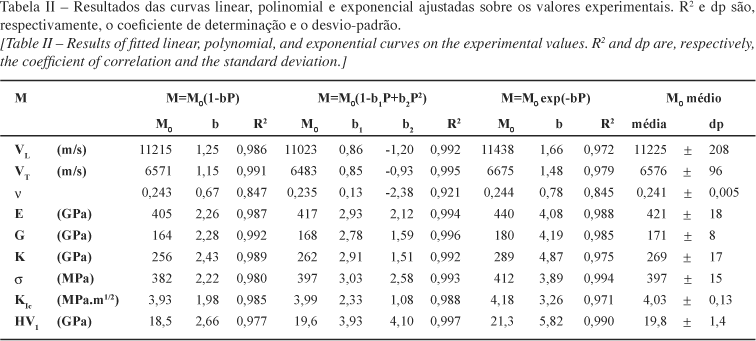A high purity alumina doped with MgO was sintered between 1300 and 1700 °C in order to prepare samples with different porosities. The following properties were determined: four-point flexural strength, fracture toughness, by SEVNB method, Vickers hardness, (transversal and longitudinal) sonic velocities, and elastic constant (nu, E, G e K), by ultrasonic pulse-echo method. The results were compared with models based on stress concentration (SC) and models based on minimum solid area (MSA). The porosity of the samples varied between 0.8% and 35%. Generally, the properties lowered with increasing porosity. This lowering was weaker in sonic velocities and stronger in hardness. The Poisson's ratio lowered only above 19% porosity. The analytical model (SC) which best fitted the results of E and G moduli was the Hashin-Rosen model for cylindrical pores aligned transversally to the applied stress. Analysis by ASM models indicated that, until 19% porosity, the model for spherical pores in cubic stacking was predominant and, above this porosity, the model for spherical particles in cubic stacking also acted.
alumina; mechanical properties; porosity; sintering

